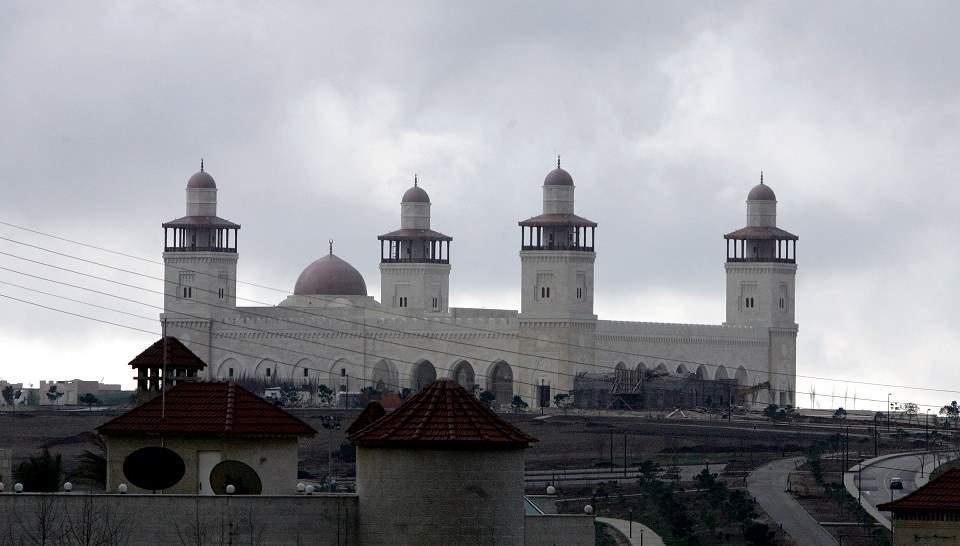King Hussein Bin Talal Mosque was built
for two main reasons: The first was to honor the memory of Jordan’s late King Hussein
who passed away in 1999, and the second was to be a landmark that
functions as Jordan’s official state mosque.
اضافة اعلان
Designed by the Egyptian-born British architect Khaled Azzam and completed in
2006, it is by far Jordan’s largest mosque with the area of 8,000sq.m. that can
accommodate 5,000 worshippers in its indoor and outdoor areas.
Located in the edge of the capital, the mosque sits on the highest hill in the
area providing a platform to the architectural icon and overlooking
Al-Hussein Public Parks, the Children’s Museum, the
Royal Automobile Museum, and the
neighborhoods around it.
The site plan takes the form of a 70x70sq.m., with each corner marked by a huge
squared minaret, giving the building a sense of greatness.
The main dome of the mosque is replicated on the minarets, while the
plan’s aligns with Jerusalem towards the southwest, creating a “spiritual axis”
as the architect called it.
The visitor is welcomed at the main entrance with a series of arches and
vaulted arcades defining the outside prayer area and leading into a courtyard
surrounded by the building.
The open air area that is enclosed from three sides is known as the iwan, and
is mostly vaulted in traditional Islamic architecture that leads from the courtyard
to the main prayer area, accommodating 2,500 worshippers.
The first floor houses offices, lecture halls, a library, and different
facilities, while the second floor houses a 350sq.m. double-winged prayer hall
for women.
The mosque is heavily influenced by Egyptian pre-modern Islamic architecture,
linking the large square structure and the four minarets with medieval-era
Cairo.
 The King Hussein Bin Talal Mosque is pictured in these undated photos. (Photos: Nayrouz Ali/Jordan News)
The King Hussein Bin Talal Mosque is pictured in these undated photos. (Photos: Nayrouz Ali/Jordan News)
The stairs that lead up to the mosque and the iwan’s spiritual white vaults might
not be the most significant experience of the mosque, but seeing the building at
night, completely lit up on top of the hill makes for a visual attraction.
A team from Balqa Applied University’s Islamic Arts Faculty created the mihrab,
the focal point of the mosque that directs worshippers towards Mecca, the facade
of the mihrab is made of rare types of wood, which were used for the building’s
construction for the first time in 300 years in the Islamic world.
In 2012, His Majesty King Abdullah opened the Museum of the Prophet, which displays
a number of relics associated with the Prophet Mohammad.
Pope Benedict XVI visited the mosque during his tour of the Holy Land in 2009.
This was his second visit to a mosque by a pope.
The mosque is now the official state mosque, where King Abdullah and the
Hashemites pray on Friday and during Ramadan.
Read more Around and Jordan






